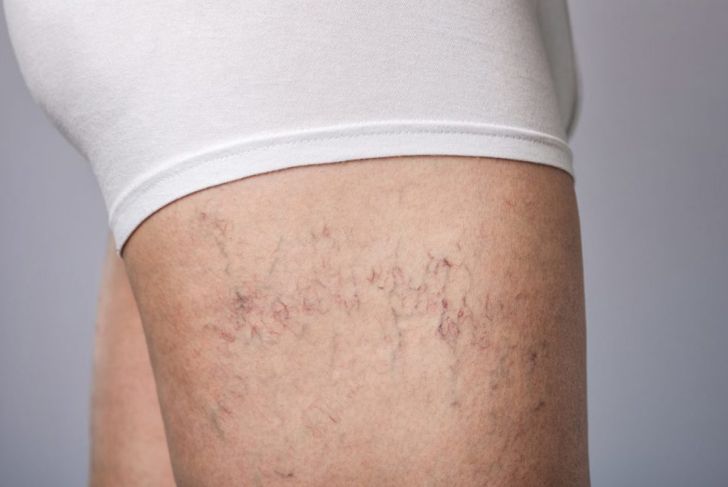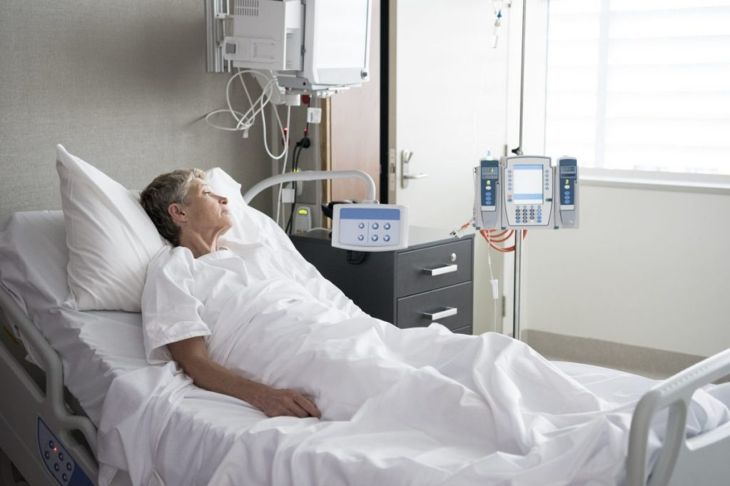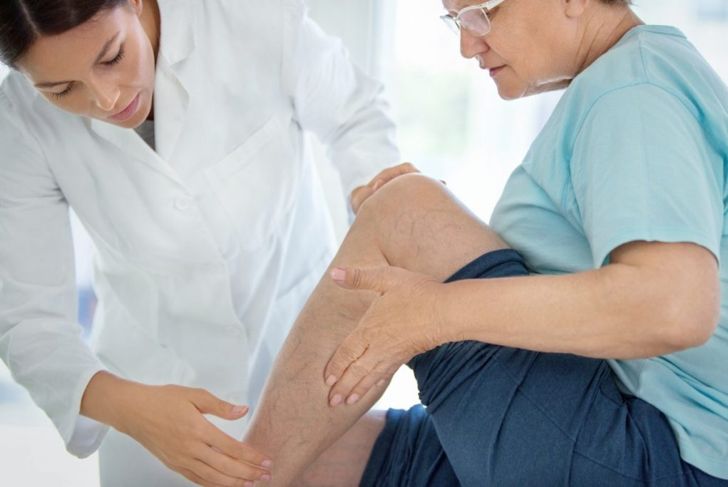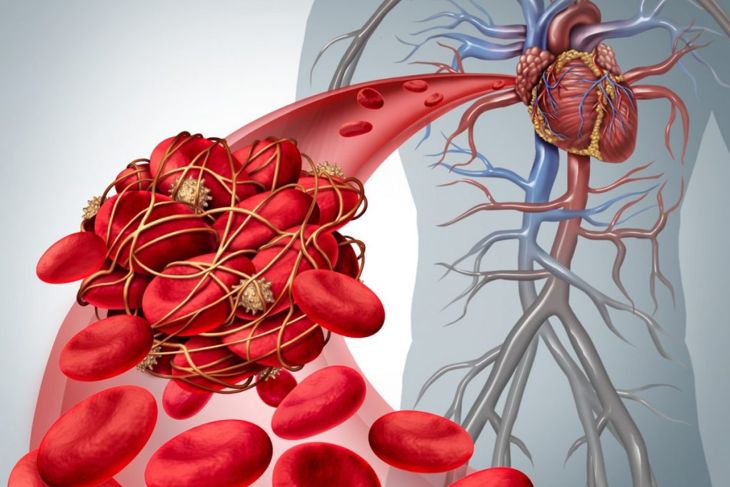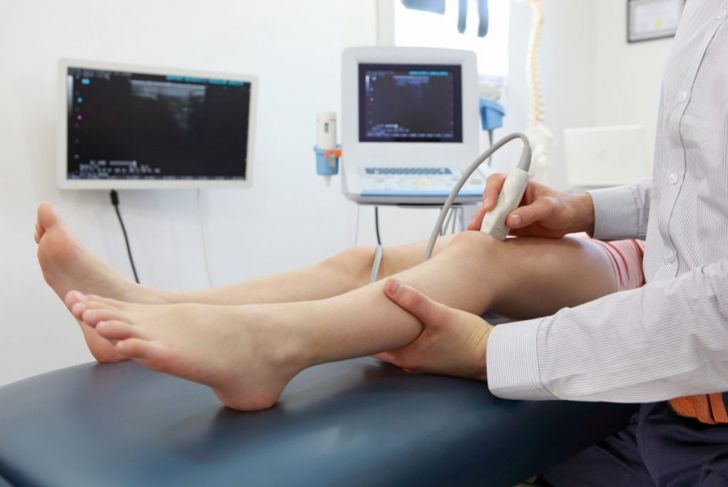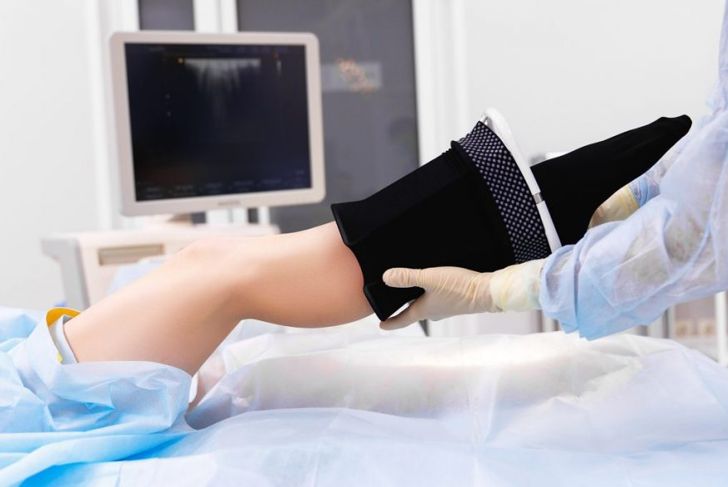Thrombophlebitis is an inflammatory process, the formation of a blood clot that blocks one or more veins. Usually, this occurs in the legs, particularly in the thighs. Doctors classify a thrombophlebitis by how close the vein is to the surface of the skin. Deeper thrombophlebitides are typically more dangerous and have more serious complications. There are many causes for the condition and factors that increase the risk.
Types of Thrombophlebitis
Experts classify thrombophlebitis in one of two ways, depending on how deep beneath the skin the issue occurs. If a blood clot forms and blocks a vein close to the surface, doctors refer to it as superficial thrombophlebitis. If the clot occurs deep within a muscle, it is deep vein thrombosis or DVT. Comparatively, DVT poses more danger because it increases the risk of other serious complications. If superficial thrombophlebitis occurs multiple times in different locations, some physicians refer to it as migratory thrombophlebitis or thrombophlebitis migrans.
Causes
There are three general causes of thrombophlebitis: vein injuries, blood clotting disorders, and being immobile for extended periods. Even minor injuries can lead to cases of thrombophlebitis. Superficial thrombophlebitis in the arms is usually due to an IV insertion. Varicose veins are the primary cause when it affects the legs. Protein S and C deficiencies are common precursors. Extremely sedentary lifestyles or being bedridden usually involve such little movement that blood flow slows and clots form.
Symptoms
The two common types of thrombophlebitis have different symptoms. Typically, superficial thrombophlebitis is more visually noticeable but has milder symptoms, usually warmth, tenderness, and pain in and near the affected region. Redness and swelling are also common. The clot can look like a hard, red cord directly beneath the skin. DVT affects veins deep within the muscles, so even if there is serious inflammation, it is rarely externally noticeable. However, this type usually causes more pain, and the area can be extremely tender.
Risk Factors
Certain people are at significantly greater risk of developing thrombophlebitis, particularly, those with varicose veins or sedentary lifestyles. Other risk factors include:
A history of strokes
Age over 60
Being clinically overweight
Having cancer
Smoking
Being pregnant or having just given birth
Having a pacemaker or catheter
Using birth control
Using hormone replacement therapy
People who spend a significant amount of time in the hospital are considered high risk, as they usually meet more than one of these factors. Pregnant women, older adults, and those in need of long-term treatments should be aware of the possibility of developing thrombophlebitis.
Possible Complications
It is rare for superficial thrombophlebitis to develop any complications because these superficial veins lack surrounding muscles. With DVT, the surrounding muscles can squeeze and dislodge a blood clot. If the clot travels to the lungs, it can cause a pulmonary embolism — the clot blocks an artery and is often life-threatening. People who have had DVT in the past are at risk of developing postphlebitic or post-thrombotic syndrome. Individuals with this syndrome have extreme pain that may be disabling. Swelling and a general feeling of heaviness often accompany this pain.
Diagnosis
Doctors have several options to diagnose or confirm the existence of thrombophlebitis. They may begin by examining veins near the skin’s surface. If they are unable to confirm a diagnosis, they may use an ultrasound. Not only is this effective at discovering thrombophlebitis, but it can also differentiate between superficial and DVT. Alternatively, some physicians order a blood test to look for higher levels of D dimer. Most people who have high D dimer levels have some type of blood clot. This test can also identify a person who is likely to develop thrombophlebitis repeatedly.
Medications
Depending on the type and severity of thrombophlebitis, doctors may use a variety of treatment options. Among the most common are blood-thinning or clot-dissolving medications. For blood thinners, patients must follow the prescription instructions exactly or risk serious side effects. Physicians usually reserve clot-dissolving medications for serious cases of DVT, usually, clots that are too large, too deep, or in a dangerous location, such as the lungs.
Surgeries
In addition to medications, some people may require surgery. People who can’t take blood thinners usually require a filter, inserted into the vena cava to protect the lungs from loose blood clots. Usually, the surgeon will remove this filter once it is no longer necessary. For superficial thrombophlebitis, some surgeons opt to remove varicose veins through a series of small incisions. Larger veins deeper in the body will handle circulating the blood that would have gone through the removed veins.
Alternative Options
Beyond medicinal options, some simple home and lifestyle remedies can help with thrombophlebitis. Sometimes, simply elevating affected limbs can alleviate superficial thrombophlebitis. People with DVT should speak to a doctor about limb elevation. Some physicians will prescribe compression clothing such as stockings. These accessories can reduce symptoms of existing clots and prevent the formation of more.
Preventing Thrombophlebitis
Though there is no sure way to prevent thrombophlebitis, people can take action to lower their risk. Taking walks is an ideal way to remain active and prevent clots from forming. People on planes, trains, or buses should occasionally walk through the aisles. Drivers should stop every hour, get out, and move around. While at home, those at risk of thrombophlebitis should flex their ankles or press their feet against the ground several times every hour. Everyone should regularly drink water and other fluids to prevent dehydration.

 Home
Home Health
Health Diet & Nutrition
Diet & Nutrition Living Well
Living Well More
More